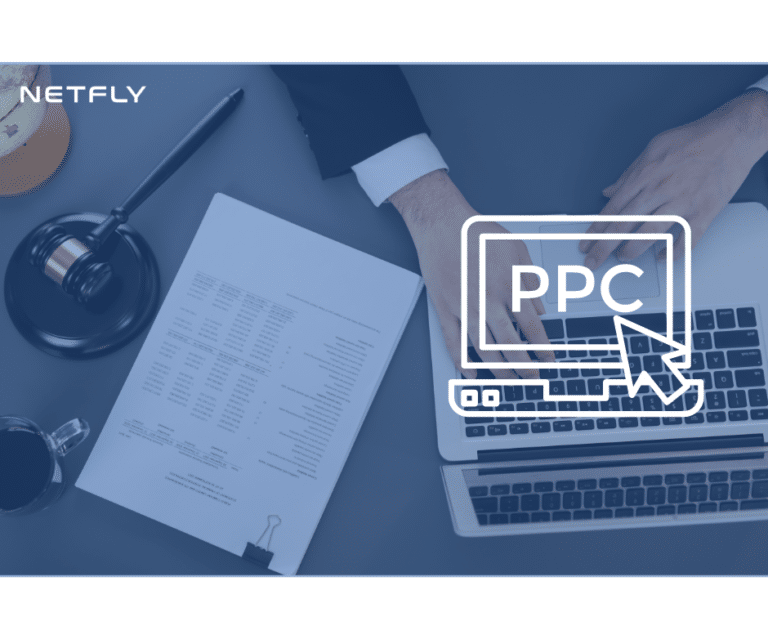Imagine your law firm expanding its horizons, tapping into new markets, and enhancing its services through strategic partnerships and alliances. The power of collaboration with like-minded organizations can be transformative, offering unique opportunities for growth and innovation. But how can you navigate the complexities of forming and maintaining these alliances to make sure they drive your firm forward effectively? Let’s explore the key strategies and considerations that can help you forge powerful alliances and propel your law firm’s growth to new heights.
Key Takeaways
- Identify partners with expertise and reputation for strategic synergy.
- Leverage pooled resources to enhance services and expand reach.
- Align objectives for mutual value creation and tracking progress.
- Forge strong partnerships for collaboration opportunities and growth.
- Regularly review KPIs for insights, trends, and refining strategies.
Benefits of Strategic Partnerships
Strategic partnerships can be a game-changer for Tier-1 law firms aiming for rapid, scalable growth. By leveraging collaboration advantages and synergy opportunities, these alliances offer a pathway to a competitive edge through shared resources. The benefits of strategic partnerships extend beyond mere cooperation; they entail a strategic melding of capabilities and strengths to achieve collective goals that surpass what each firm could accomplish alone.
One of the key advantages of strategic partnerships lies in the shared resources that enable firms to optimize their operations and expand their reach. Through pooling resources such as expertise, technology, and networks, law firms can access a broader spectrum of tools and knowledge, enhancing their ability to deliver exceptional services to clients. This not only boosts efficiency but also fosters innovation and adaptability in an ever-evolving legal landscape.
Furthermore, strategic partnerships open doors to new markets and clientele, propelling growth trajectories to unprecedented heights. By tapping into each other’s networks and market insights, law firms can uncover opportunities that would have otherwise remained elusive. This market expansion not only increases revenue streams but also solidifies the firm’s position as a prominent player in the industry.
In essence, strategic partnerships offer Tier-1 law firms a strategic avenue to fortify their foundations, amplify their capabilities, and chart a course towards sustainable growth in today’s competitive legal environment. By embracing collaboration advantages and synergy opportunities, these alliances lay the groundwork for long-term success and resilience.
Identifying Ideal Alliance Partners
When identifying ideal alliance partners for your law firm, consider partner selection criteria and conduct a mutual benefit assessment.
This strategic approach guarantees that your alliances are based on mutual goals, values, and objectives.
Partner Selection Criteria
To identify ideal alliance partners for your law firm’s growth, meticulously evaluating potential collaborators based on their expertise, industry reputation, and alignment with your firm’s values is essential.
Partner compatibility assessment and strategic synergy evaluation are vital in determining the collaborative potential and alliance viability criteria. Look for partners who bring complementary skills and knowledge to the table, enhancing your firm’s capabilities. Consider their track record in similar partnerships and their reputation within the industry.
Assess whether their values and culture align with yours to guarantee a harmonious and productive relationship. By conducting a thorough analysis of these factors, you can identify partners who not only add value but also propel your law firm towards sustainable growth.
Mutual Benefit Assessment
When identifying ideal alliance partners for your law firm’s growth, consider conducting a thorough mutual benefit assessment to guarantee strategic alignment and synergy. Collaboration assessment and partnership evaluation are important steps in this process.
By engaging in joint venture analysis and alliance exploration, you can identify partners whose strengths complement your firm’s weaknesses and vice versa. Look for organizations that share similar values and goals to make sure a cohesive and productive partnership.
Assess potential partners not only based on their current capabilities but also on their future potential to contribute to mutual growth. This detailed evaluation will help you form alliances that aren’t only beneficial in the short term but also sustainable for long-term success.
Establishing Mutually Beneficial Agreements
In the domain of law firm growth, fostering mutually beneficial agreements stands as a cornerstone for strategic development and expansion. When establishing these agreements, consider the following key points:
- Identifying Common Goals: Begin by aligning your objectives with potential partners to guarantee synergy and shared vision. Collaboration opportunities arise when both parties have a clear understanding of what they aim to achieve together.
- Leveraging Expertise: Recognize the partnership benefits that come from pooling resources and expertise. By combining strengths, law firms can enhance their service offerings, reach new markets, and capitalize on each other’s knowledge base.
- Creating Value: Focus on how the partnership can generate value for both sides. Establish mechanisms to track progress, measure success, and ensure that the relationship remains mutually beneficial over time. By continuously evaluating and adapting the agreement, you can maximize its impact on your law firm’s growth trajectory.
Leveraging Partner Networks for Growth
Leverage the power of strategic partner networks to propel your law firm towards exponential growth and enhanced market presence. By forging strong partnerships with other firms, you open up a world of collaboration opportunities and network expansion that can drive your business to new heights. Strategic alliances allow you to tap into the strengths and capabilities of your partners, creating a synergy that benefits all parties involved.
Collaboration opportunities within partner networks can lead to shared resources, knowledge exchange, and access to new markets. By leveraging the expertise of your partners, you can enhance your service offerings and provide clients with a more all-encompassing solution to their legal needs. This not only adds value to your services but also strengthens your position in the competitive legal landscape.
Moreover, network expansion through strategic partnerships enables your firm to reach a broader audience and attract clients that you may not have been able to reach on your own. By connecting with like-minded firms, you can leverage their existing client base and reputation to expand your reach and grow your business exponentially.
Overcoming Challenges in Partnerships
To maximize the benefits of strategic partner networks for your law firm, it’s imperative to address and overcome the challenges that may arise in these collaborations. Here are key strategies to help you navigate and conquer these obstacles:
- Effective Communication: Clear and open communication is the cornerstone of successful partnerships. Establishing channels for transparent dialogue guarantees that expectations, goals, and concerns are shared and understood by all parties involved. Regular check-ins, feedback sessions, and progress updates help foster a culture of collaboration and alignment.
- Trust Building: Building trust is fundamental in any partnership. Trust is cultivated through consistency, reliability, and integrity in your actions and commitments. Be dependable, follow through on promises, and demonstrate respect for your partners’ expertise and perspectives. Trust forms the foundation upon which successful partnerships thrive.
- Conflict Resolution: Conflicts are inevitable in any partnership, but how they’re managed can make or break the collaboration. Develop a structured approach for resolving disagreements, focusing on finding mutually beneficial solutions while preserving the relationship. Encourage open dialogue, active listening, and a willingness to compromise to navigate conflicts effectively.
Measuring Success and Adjusting Strategies
Utilize key performance indicators to gauge the effectiveness of your strategies and make informed adjustments for maximum growth in your law firm. Monitoring progress is vital to guarantee that your strategic partnerships and alliances are yielding the desired outcomes. By establishing clear KPIs at the outset, you can track the impact of these initiatives and identify areas that may require adaptations.
Adapting approaches based on the data collected from your KPIs is essential for optimizing your strategies. If certain partnerships aren’t delivering the expected results, be prepared to pivot and explore new avenues. Flexibility in adjusting your strategies demonstrates a proactive approach to maximizing the benefits of your alliances.
Regularly reviewing and analyzing your KPIs will provide valuable insights into the effectiveness of your partnerships. It allows you to identify trends, strengths, and weaknesses, enabling you to refine your strategies for better outcomes. By consistently monitoring progress and adapting your approaches accordingly, you can make sure that your law firm’s growth trajectory remains on track.
Frequently Asked Questions
How Can Law Firms Navigate Conflicts of Interest in Partnerships?
When confronting conflicts of interest in partnerships, you must proceed cautiously to uphold ethical guidelines and maintain client trust. Conflict resolution requires transparent communication strategies and a focus on client referrals.
What Strategies Can Firms Use to Maintain Alliance Momentum?
To maintain alliance momentum, focus on effective communication strategies.
Implement incentive programs to motivate teams and align goals.
Regularly track performance metrics to guarantee progress.
Foster team building activities to strengthen relationships.
These approaches can sustain engagement and drive success within your partnerships.
How Do Firms Handle Disputes or Disagreements With Partners?
When disputes arise with partners, effective conflict resolution is key. Open communication and understanding partnership dynamics are essential.
Collaborate on finding solutions that align with both parties’ goals. Address challenges promptly, using respectful and professional communication strategies.
What Are Some Innovative Ways to Showcase Partnership Successes?
While showcasing partnership successes, consider hosting virtual events to highlight achievements and foster connections. Develop engaging case studies that demonstrate the positive outcomes of collaborations.
Utilize eye-catching infographics to visually represent the impact of successful partnerships. Conduct webinars to share insights and best practices, allowing partners to showcase their expertise.
These innovative approaches can effectively promote and celebrate the successes of your partnerships.
How Can Law Firms Proactively Prevent Partnership Burnout?
To prevent partnership burnout, focus on building resilience. Manage expectations by setting realistic goals and boundaries.
Promote open communication to address concerns and avoid misunderstandings. Encourage teamwork and support each other through challenging times.
Final Thoughts
By forging powerful alliances with strategic partners, your law firm can skyrocket to new heights of success. The possibilities are endless when you leverage shared resources, expertise, and networks to propel your growth.
With clear communication, trust-building, and structured conflict resolution strategies in place, you can overcome any obstacle that comes your way. Keep pushing boundaries, seizing opportunities, and watch your firm soar to unprecedented levels of achievement. The sky’s the limit!










